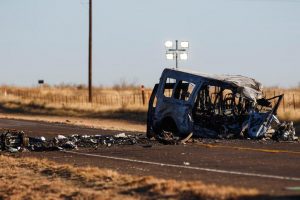Stay-at-home orders for more than two million people in Australia’s third-biggest city Brisbane were lifted Thursday, ending a snap coronavirus lockdown just ahead of the traditionally busy Easter holidays.
The three-day lockdown ordered Monday saw schools, restaurants and bars forced to close after an outbreak in Brisbane, with health officials saying it was necessary to stop the virus spreading and bolster contact tracing.
It was the latest in a series of mini lockdowns in Australian cities this year, which authorities say have quickly brought virus outbreaks under control and avoided more onerous measures.
Just one new case was detected in Brisbane on Thursday, taking the number of cases to 14, allowing restrictions to be eased.
Masks will be mandatory in public spaces while restrictions on gatherings and dancing will also remain in place.
“We’re not out of the woods yet so… for the next two weeks if we all do the right thing, we can get through this together,” state Premier Annastacia Palaszczuk said.
Also read: Two Australian cabinet ministers demoted after dual rape scandals
The news was expected to provide relief for the beleaguered tourism sector in Queensland — known as Australia’s “Sunshine State” for its inviting weather — with the popular destination now fully open to visitors just ahead of Easter holidays beginning Friday.
However, Bluesfest, a major music festival in Byron Bay, was cancelled just hours ahead of its planned start Thursday after a positive case linked to the Brisbane outbreak was recorded in the New South Wales coastal town.
Australia has been relatively successful in curbing the spread of coronavirus, with only one nationwide lockdown during the pandemic so far and most regions now enjoying few restrictions.
The country has reported around 30,000 COVID-19 cases and fewer than 1,000 deaths in total out of a population of 25 million — including those detected in quarantine for overseas travellers.
But it is one of the few wealthy nations to have an extremely limited vaccination rollout, with the roughly 700,000 doses administered to date falling far short of an initial plan to jab four million people by the end of March.







